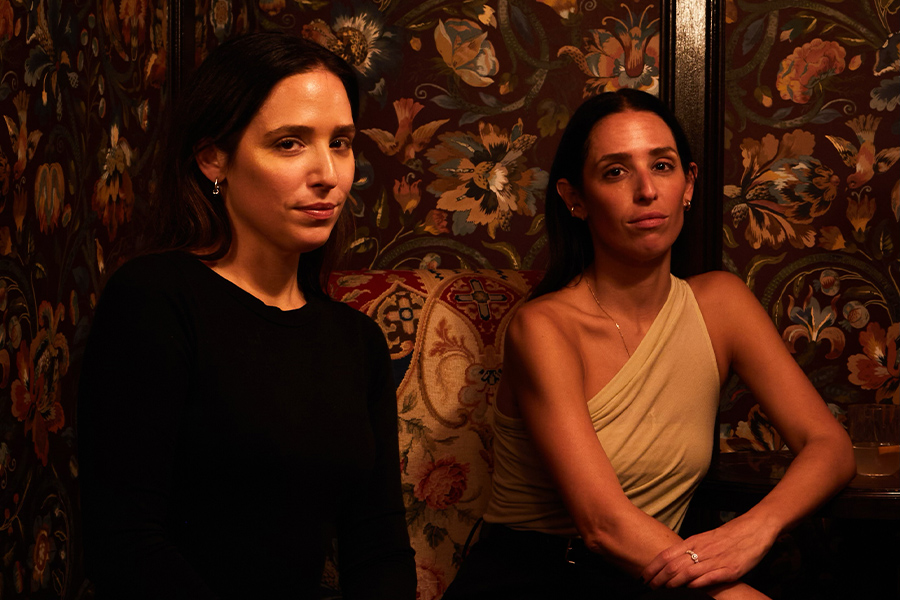In this installment of Meet the Minds, Rob Laschever and Toby Schermerhorn of Frederick, Maryland-based firm Cauhaus Design, which is celebrating 25 years, share how they got to where they are today, early design memories, and their process.
Where did you grow up? Did it influence your career path?
Toby Schermerhorn: I was born and raised in Aruba. As a teenager, I moved to Western Massachusetts. I have strong memories of the beautiful Caribbean waters, the pastel-colored homes of Aruba, and the fall colors of New England, but my father’s love of travel was probably the strongest influence on my career.
Rob Laschever: I grew up in Connecticut. Strange as it may sound, Connecticut’s state animal, the sperm whale, might have been the greatest influence on my career. After seeing a full-size whale skeleton in the New Bedford Whaling Museum, this love was secured. From an early age, I drew sperm whales over and over. All of my early art class projects were of whales, sharks, and dolphins. Drawing these beautiful curvaceous animals was great practice for developing an eye for shapes, an artful hand, and a love of drawing.
What is your first design memory?
TS: As a teenager, my father asked me to design a six-foot diameter stained-glass window for the front of the A-frame house he built for us. I provided an elaborate, geometric, multi-colored design that my father built and installed. Seeing my work come to life was a delight.
RL: Supermarket oranges used to come in tall slatted wooden crates, which my mother would bring home. I would take these crates and modify them with shelves, openings, and other features. I painted them white with accent colors. Thinking back on this, these crates were my first architectural designs, which allowed me to think about spatial qualities.

The Tillery restaurant at the Marriott Owings Mills Metro Centre in Maryland
Give us a bit of your background.
TS: I went to Hinckley, an arts and crafts-focused private high school in Maine. As an undergraduate, I attended Smith College, majoring in printmaking, costume design, and theater lighting. For my master’s, I attended the University of Massachusetts. While in graduate school, I spent a summer at a design firm in London, before settling in Maryland.
RL: I attended Hobart College for one year as an art major then transferred to Syracuse University’s five-year School of Architecture program. I spent one semester abroad in Florence, and after graduating, I moved to Baltimore, a place I knew nothing about, but was ripe with work. I worked for a number of architectural firms. I was fortunate enough to work with several architects who had an amazing knowledge of building, architectural drawing, details, and materials.
How would you describe your firm’s style?
TS: We pride ourselves on our ability to problem solve and to provide an appropriate design response for each project. That being said, we are modernists at heart with a somewhat playful approach to design. Style is not the first thing we consider or address. Spaces, views, light quality, and mood are some of the initial elements we consider. Our focus is on designs that address the needs of the guests, create unique spaces, and provide memorable experiences.

The River Street Inn in Savannah, Georgia
Describe your recent hospitality projects.
RL: Cauhaus Design’s most recent project is the Marriott Owings Mills Metro Centre in Maryland. It was designed for an owner whose love of modern art was a true inspiration. While paying homage to the area’s industrial roots, the design of this hotel was intended to provide galleries with beautiful spaces for the owner’s museum-quality art collection, and places for guests to enjoy unique, inspired experiences.
The Renaissance Bloomington Minnesota Hotel is a project we completed near the heart of the musician Prince’s birthplace, down the street from the Mall of America. The hotel’s design is based on the fictitious life of Lars, a hardworking, outdoor enthusiast, who seeks adventure. We also completed the River Street Inn in Savannah, Georgia. This renovation of three cotton warehouses from the 1700s faces the Savannah River. With so much local history and character as inspiration, the design concept for this hotel is an eclectic and playful reflection of the city itself.
What do you love most about hospitality design?
TS: Each project offers the potential to design spaces where people live, sleep, eat, socialize, exercise, and celebrate. Every project is an opportunity to become familiar with a place and to reflect on its virtues, its character, and its people.

The lobby at the Marriott Owings Mills Metro Centre
What architect or designer do you admire most?
RL: Our favorite architect/designer team is Charles and Ray Eames. Throughout their careers, they were able to explore the meaning and potential of design in many areas of architecture and design. They designed buildings, interiors, furniture, products, art, and film. Their modern-yet-eclectic sense of design made them open and flexible to every challenge they took on.
If you weren’t in your current career, what would you be doing?
TS: I would be leading architectural yoga/meditation seva (selfless service) retreats around the world. We would spend time adventuring, visiting new places, volunteering, and practicing mindfulness. We would be spending time looking at the beauty that both surrounds us and is within us all.
RL: Before becoming an architect, I had dreams of spending my time on a whale, shark, or dolphin research vessel. I saw myself studying, photographing, creating paintings, and swimming with these amazing creatures. I have been scuba diving with sharks and dolphins for many years now, so perhaps someday this will become my second career.


